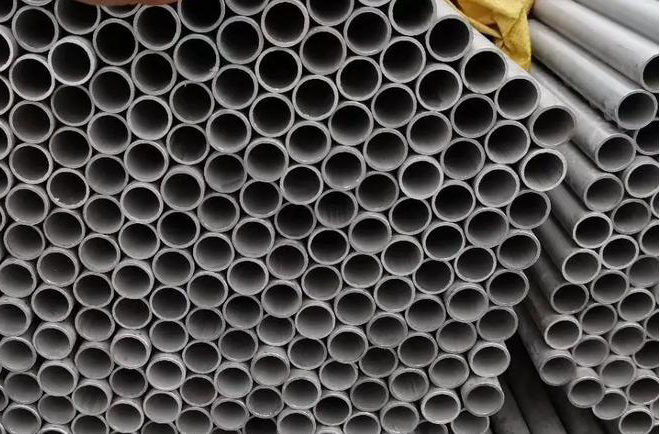Seamless stainless steel pipes, as a common pipe material, have good corrosion resistance, but some anti-corrosion measures are still needed to extend their service life. The following are some common anti-corrosion methods for stainless steel pipes:
1. Surface treatment
The surface treatment of seamless stainless steel pipes is an important part of preventing corrosion. Common surface treatment methods include mechanical polishing, chemical treatment (surface passivation) and electroplating. Mechanical polishing can remove oxides and impurities on the surface of the pipe and improve the corrosion resistance of stainless steel pipes. Chemical treatment can form a protective film by adding chemicals to prevent corrosive media from corroding the pipe. Electroplating is to cover the surface of the stainless steel pipe with a layer of metal to increase its corrosion resistance. The specific steps are as follows:

Surface passivation: By forming a thin and strong protective oxide film on the surface of stainless steel, its corrosion resistance is enhanced. The passivation process usually involves cleaning the surface of seamless stainless steel, removing oxides and contaminants, and then soaking it in a passivation solution. Common passivation solutions include nitric acid, oxalic acid, etc.
Electroplating or coating: A protective metal layer (such as nickel, zinc or chromium) is deposited on the surface of stainless steel by electroplating, or a protective layer is formed on the surface of stainless steel using anti-rust coatings (such as epoxy resin, polyurethane coating). These methods can isolate the direct contact between the stainless steel surface and the external environment, thereby reducing the possibility of corrosion.
2. Choose the right material
When choosing seamless stainless steel pipes, the right material should be selected according to different use environments. Common stainless steel materials include 304, 316 and
321 stainless steels, etc. These materials have different corrosion resistance and are suitable for different working conditions. For example,
316 stainless steel has better corrosion resistance and is suitable for marine environments or acidic media. Choosing the right material can greatly improve the corrosion resistance of stainless steel pipes.
3. Control the pH value of the medium
Seamless stainless steel pipes are prone to corrosion in acidic and alkaline environments. Therefore, the pH value of the medium should be controlled during use to avoid excessively high or low pH. Some special media may require neutralization treatment to protect the pipe from corrosion. In addition, regular testing of the pH value of the medium and adjustment as needed are also important measures to prevent corrosion of stainless steel pipes.
4. Regular cleaning and maintenance
After using seamless stainless steel pipes for a period of time, dirt and impurities may accumulate, affecting their anti-corrosion effect. Therefore, regular cleaning and maintenance of stainless steel pipes is necessary. Cleaning can remove dirt and corrosive substances on the surface of the pipe and improve its anti-corrosion performance. Maintenance includes lubrication, tightening bolts, and preventing damage to the pipe surface. Regular cleaning and maintenance can extend the service life of stainless steel pipes.
5. Prevent physical damage
Seamless stainless steel pipes are susceptible to physical damage during transportation and installation, resulting in damage to the anti-corrosion layer, thereby reducing the anti-corrosion effect. Therefore, care should be taken to protect the pipes during transportation and installation to avoid collision or abrasion with hard objects. At the same time, avoid using sharp tools to scratch the pipes to avoid damaging the anti-corrosion layer.
6. Avoid contact with dissimilar metals
Contact between stainless steel and other metals (such as copper and aluminum) may cause electrochemical corrosion. Direct contact between stainless steel and dissimilar metals should be avoided as much as possible, or measures such as insulating gaskets should be used to prevent electrochemical reactions.
7. Application of anti-corrosion agents
In some environments, anti-corrosion agents (such as anti-rust oil, antioxidants) can be used to improve the rust resistance of stainless steel. These anti-corrosion agents can usually form a protective film on the surface of stainless steel to reduce the risk of corrosion
8. Heat treatment
Heat treatment (such as solution treatment) can improve the corrosion resistance of stainless steel. During the heat treatment process, stainless steel is heated to a high temperature and then cooled rapidly to form a more stable organizational structure and improve its corrosion resistance .
Through the above methods, the corrosion of seamless stainless steel pipes can be effectively prevented and their service life can be extended.
Read more: Stainless Steel Seamless Pipe Manufacturing Process or Carbon steel vs Stainless steel


